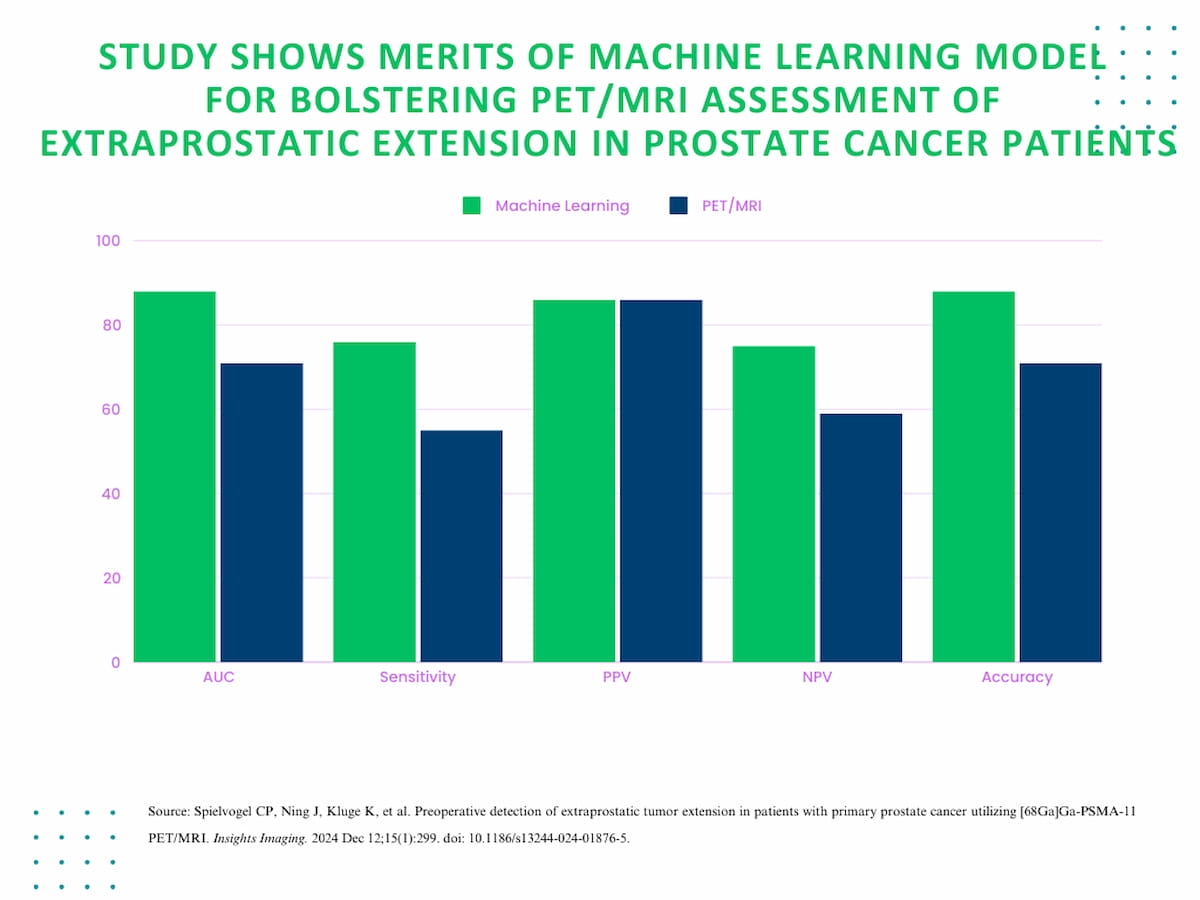For Related Content
1. Improved diagnostic accuracy. Machine learning models demonstrated 17 percent higher accuracy (88 percent vs. 71 percent) and sensitivity (76 percent vs. 55 percent) compared to conventional PET/MRI for detecting extraprostatic extension (EPE) in prostate cancer patients.
2. Enhanced predictive performance. The machine learning model showed improved negative predictive value (75 percent vs. 59 percent), indicating better ability to rule out EPE, which is critical for preoperative planning.
3. Clinical relevance for staging and treatment. Integrating machine learning with PET/MRI can enhance TNM staging accuracy, aiding in surgical decisions, radiation therapy, and hormone therapy strategies for prostate cancer management.
